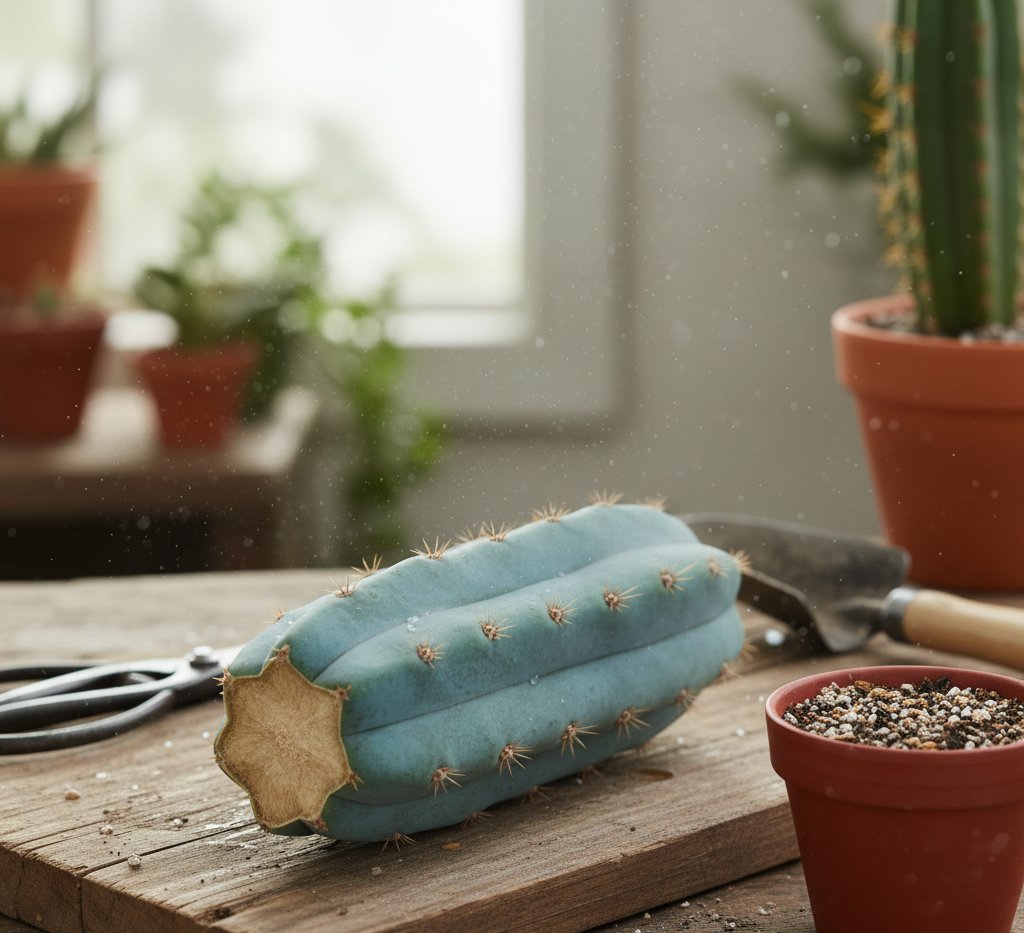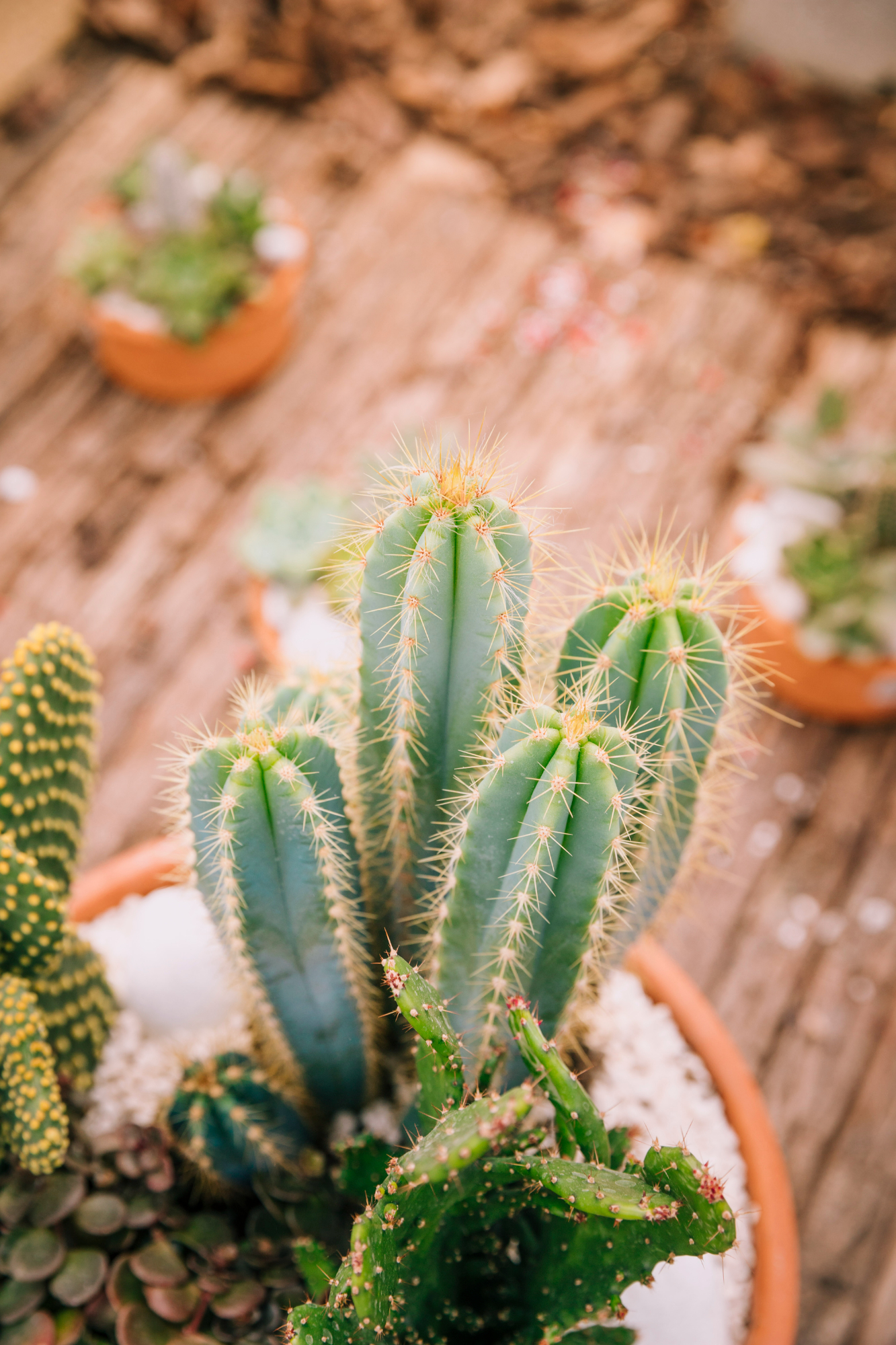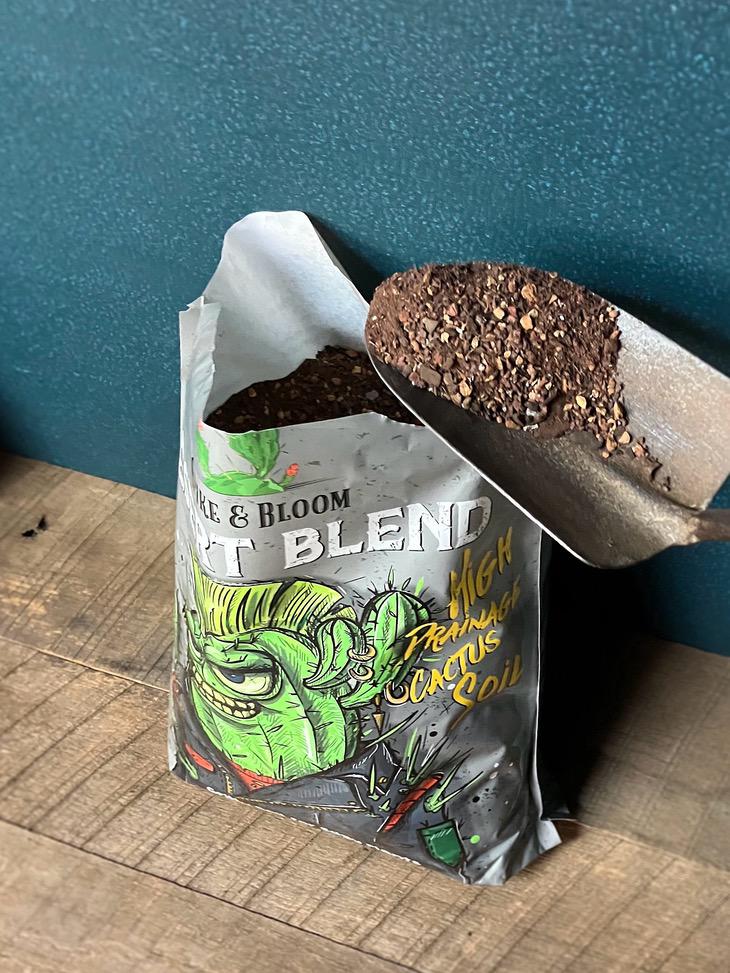Blue Torch Cactus Care
The Blue Torch Cactus (Pilosocereus pachycladus) stands out with its tall, column-like shape and striking blue color that deepens as it matures. Its unique look makes it a favorite for both indoor spaces and warm outdoor gardens. To keep your Blue Torch Cactus healthy, give it bright light, well-draining soil, and careful watering that mimics its natural desert environment.
You’ll find that this cactus grows quickly when conditions are right, often adding a foot or more each year. It thrives in warm temperatures and needs protection from frost. With the right care, it can reward you with soft golden spines and and funnel-shaped white blooms in the warmer months.
Caring for this cactus doesn’t take much effort once you understand its needs. By choosing the right soil mix, watering schedule, and placement, you can enjoy a low-maintenance plant that adds texture and color to your space year-round.
Key Takeaways
- Provide bright light, warmth, and well-draining soil for healthy growth.
- Water sparingly and protect from cold or frost damage.
- Use proper soil and potting methods to support strong roots and steady growth.
Essential Blue Torch Cactus Care Requirements
The blue torch cactus (Pilosocereus pachycladus) grows best when given strong sunlight, moderate watering, and warm, dry air. You can help this columnar cactus stay healthy by mimicking the bright and arid conditions of its native range in Brazil and other parts of South America.
Light and Placement

Place your blue torch cactus where it receives a minimum of 6 hours of bright, direct sunlight each day. A south-facing window or outdoor spot with full sun works best. Insufficient light causes the cactus to lose its blue tone and turn dull green.
If you grow it indoors, rotate the pot every few weeks to promote even growth. Use a grow light if natural sunlight is limited. Keep the cactus away from shaded corners or areas with filtered light for long periods.
When grown outdoors in warm regions, this species tolerates full sun well. In very hot desert climates like the Sonoran Desert, provide light shade during the harshest afternoon hours to prevent sunburn.
Watering Guidelines
Water your plant only when the soil is completely dry. Overwatering is the most common cause of root rot in Pilosocereus pachycladus. During the active growing season (spring/summer), soil will typically dry out faster, requiring more frequent watering than in the dormant winter season, when watering should be significantly reduced (e.g., once a month or less).
Always use a well-draining, gritty soil mix made of cactus soil, coarse sand, and perlite. Empty any standing water from saucers after watering. The pot should have a drainage hole to prevent soggy roots.
If the cactus wrinkles slightly, it may need water. If it feels soft or dark at the base, it may be too wet. Checking the soil moisture before watering helps maintain a healthy balance.
Temperature and Humidity Needs
Keep the blue torch cactus in warm temperatures between 70-85°F (21-29°C). This plant prefers a dry environment similar to its native habitat. It can handle short drops to 50°F (10°C) but should be protected from frost.
Maintain low humidity. Avoid placing it near humidifiers or in bathrooms. Good airflow helps prevent fungal issues, especially in indoor spaces.
During colder months, move the cactus indoors to a sunny window. Avoid sudden temperature changes, as this can stress the plant and slow its growth.
Soil and Potting Recommendations
Your Blue Torch Cactus grows best in soil that drains quickly, a pot with open airflow, and a schedule that refreshes the growing medium every few years. These factors prevent root rot and help your Pilosocereus azureus develop strong, upright growth.
Choosing the Right Cactus Soil
Use a well-draining cactus soil mix. The soil should feel gritty and loose, not dense or compact. A good blend includes:
| Component | Purpose | Example Ratio |
|---|---|---|
| Coarse sand | Improves drainage | 1 part |
| Perlite or pumice | Adds air pockets | 1 part |
| Cactus potting soil | Provides structure and nutrients | 1 part |
Avoid regular garden soil because it holds too much moisture. You can also adjust the mix by adding crushed granite or small gravel if your environment is humid.
Keep the soil slightly acidic to neutral (pH 6–7). This range supports nutrient uptake and reduces the risk of root diseases. After planting, water lightly to settle the soil but never let it stay soggy.
Pot Selection and Drainage
Choose a pot with drainage holes at the bottom. Without them, water collects and suffocates roots. Clay or terracotta pots work well because they allow moisture to evaporate through the sides.
For seedlings, use 4–6 inch pots. Mature plants need deeper containers to support their tall growth and root system. Make sure the pot’s width leaves space for air circulation around the cactus base.
Avoid decorative pots without drainage unless you use them only as outer covers. Always check that the inner container drains freely. Do not add gravel or rocks to the bottom of the pot; this actually hinders drainage and can cause root rot.
Repotting Tips
Repot every 2–3 years to refresh the soil and give roots more room. The best time is in spring or early summer when the cactus starts active growth.
Wear gloves to protect your hands from spines. Gently remove the plant, shake off old soil, and inspect the roots. Trim any soft or dark spots before placing it into new soil.
After repotting, wait about a week before watering. This pause allows root cuts to heal and reduces the chance of rot. Keep the cactus in bright, indirect light for a few days before returning it to full sun.
Growth, Fertilization, and Propagation
Blue Torch Cactus (Pilosocereus pachycladus) grows upright and tall, often reaching several feet when given enough sunlight and space. It responds well to balanced feeding and careful propagation, allowing you to expand your plant collection with healthy, sturdy columnar cacti.
Fertilizing Blue Torch Cactus
You should fertilize your Blue Torch Cactus once a month during its active growing season in spring or early summer. Use a balanced, diluted cactus fertilizer with a low nitrogen ratio, such as 5-10-10 or 10-10-10, to support root and stem development without causing weak growth.
Avoid fertilizing in fall and winter when the plant enters dormancy. During this rest period, nutrients can build up in the soil and harm the roots.
A simple schedule can help:
| Season | Fertilizer Type | Frequency | Notes |
|---|---|---|---|
| Spring–Summer | Diluted cactus fertilizer | Once a month | Apply after watering |
| Fall–Winter | None | — | Keep dry and cool |
Well-draining, gritty soil helps prevent mineral buildup. Always water before applying fertilizer to protect the roots from burn.
Propagation Methods

You can propagate Pilosocereus by stem cuttings or seeds, though cuttings are faster and more reliable. Choose a healthy, mature stem and cut a 4-6 inch section using a clean, sharp knife.
Let the cutting dry for several days until the end forms a firm callus. Then plant it in dry, sandy soil and water lightly after a week.
For seed propagation, sow fresh seeds on the soil surface and keep them slightly moist until they sprout. Growth is slow at first but steady under bright light and warm temperatures between 70-85°F (21-29°C).
Both methods work best with good ventilation and consistent warmth, helping your columnar cactus establish strong roots and upright growth.
Troubleshooting and Common Issues

The blue torch cactus may face problems like excess moisture, pest infestations, or skin irritation from its spines. Paying attention to watering habits, plant health, and safe handling helps keep your cactus healthy and long-lived.
Pests and Diseases
The blue torch cactus can attract mealybugs, scale insects, and spider mites. These pests feed on plant sap, causing yellowing, scarring, and slowed growth. You may see white cottony spots or small brown bumps on the stems.
Inspect your cactus regularly, especially around the base and between ribs. Use a cotton swab dipped in rubbing alcohol to remove visible pests. For larger infestations, apply an insecticidal soap or neem oil spray every few days until the problem clears.
Keep good air circulation and avoid overwatering to reduce disease risk. Fungal infections often start in damp, poorly ventilated areas. Remove any damaged tissue promptly to prevent spread.
Safety and Handling
The blue torch cactus has sharp spines that can easily puncture skin. Always wear thick gloves and use tongs or folded newspaper when moving or repotting the plant.
If a spine breaks off in your skin, remove it carefully with tweezers and clean the area with soap and water. Some people may experience mild irritation, so avoid touching your face or eyes after handling the cactus.
Keep the cactus out of reach of children and pets. While not toxic, its spines can cause injury if touched or chewed.


